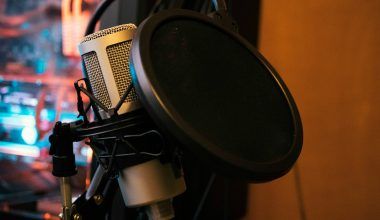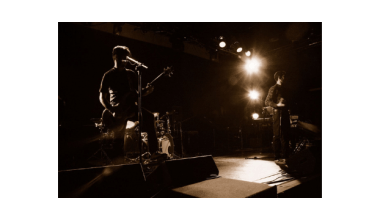Recording at home has become incredibly popular among musicians, podcasters, and content creators. With the rise of affordable recording equipment and software, setting up a home studio is more accessible than ever. However, it’s easy to make mistakes that can negatively affect the quality of your recordings. In this blog, we will explore mistakes to avoid when recording at home to ensure your final product sounds professional and polished.
Ignoring Acoustic Treatment
One of the biggest mistakes to avoid when recording at home is neglecting acoustic treatment. Your recording environment plays a crucial role in how your recordings will sound. Without proper acoustic treatment, you’ll likely encounter issues like unwanted reverb, echoes, and uneven frequencies.
Solutions:
- Invest in acoustic panels and bass traps.
- Use rugs, curtains, and bookshelves to help absorb sound.
- Experiment with the placement of your microphone and instruments to find the best sound.
Overlooking the Importance of Good Microphone Placement
Another common mistake to avoid when recording at home is improper microphone placement. The position of your microphone can drastically affect the tone and clarity of your recordings.
Tips:
- Keep the microphone at a proper distance from the sound source to avoid distortion.
- Use pop filters to reduce plosive sounds.
- Experiment with different angles and distances to capture the best sound.
Using Low-Quality Equipment
While it’s tempting to start recording with whatever equipment you have, using low-quality gear is a major mistake to avoid when recording at home. Cheap microphones, interfaces, and cables can introduce noise and limit the quality of your recordings.
Recommendations:
- Invest in a good-quality condenser microphone.
- Use a reliable audio interface with low latency.
- Choose high-quality cables to avoid interference.
Neglecting Proper Gain Staging
Improper gain staging is a technical mistake to avoid when recording at home that can lead to distorted or noisy recordings. Gain staging refers to setting the optimal input levels throughout the recording chain to ensure clarity and headroom.
Steps to Proper Gain Staging:
- Start with setting your microphone gain to capture a clean signal without clipping.
- Monitor levels in your digital audio workstation (DAW) to avoid exceeding 0 dB.
- Use the gain structure to ensure consistent levels throughout the recording process.
Not Using Reference Tracks
A mistake to avoid when recording at home is not using reference tracks. Reference tracks are professionally mixed and mastered songs that you can use as a benchmark to compare your recordings.
How to Use Reference Tracks:
- Import a reference track into your DAW to compare levels and EQ.
- Match the tonal balance and dynamics of your track with the reference.
- Regularly switch between your mix and the reference to ensure consistency.
Skipping Proper File Management
Disorganized files and projects can cause chaos in your workflow. Skipping proper file management is a mistake to avoid when recording at home that can lead to lost files, confusion, and increased stress.
Best Practices:
- Create a clear folder structure for your projects, audio files, and backups.
- Name your tracks and files descriptively to easily locate them later.
- Regularly back up your sessions to avoid data loss.
Ignoring the Importance of Monitoring
Monitoring your recordings through inadequate speakers or headphones is another mistake to avoid when recording at home. Poor monitoring can lead to an unbalanced mix and issues that only become apparent when played on other systems.
Monitoring Tips:
- Invest in quality studio monitors for accurate sound representation.
- Use flat-response headphones to get a true sense of your mix.
- Regularly check your mix on different speakers and headphones to ensure it translates well.
Recording in a Noisy Environment
Recording in an environment with background noise is a mistake to avoid when recording at home that can ruin the quality of your recordings. Even minor noises like fans, street sounds, or household appliances can be picked up by sensitive microphones.
How to Reduce Noise:
- Choose the quietest room in your home for recording.
- Turn off fans, air conditioners, and other noise-producing devices.
- Use noise gates in your DAW to minimize low-level noise.
Over-Processing Your Tracks
Using too much EQ, compression, reverb, or other effects is a common mistake to avoid when recording at home. Over-processing can make your recordings sound unnatural and overcooked.
Tips for Processing:
- Apply processing with a light touch and always compare with the unprocessed track.
- Use EQ to cut unwanted frequencies rather than boosting.
- Apply compression to control dynamics without squashing the life out of the track.
Forgetting to Warm Up
Skipping vocal or instrument warm-ups is a mistake to avoid when recording at home that can lead to subpar performances. A good warm-up prepares your voice or hands, ensuring that you’re ready to deliver your best performance.
Warm-Up Tips:
- Spend at least 10-15 minutes warming up before recording.
- Focus on breath control, scales, and stretching exercises.
- Take breaks during long sessions to avoid strain and fatigue.
Not Taking Breaks
Recording for long periods without breaks is a mistake to avoid when recording at home that can lead to ear fatigue and lower the quality of your work.
Benefits of Taking Breaks:
- Resting your ears helps maintain a fresh perspective.
- Breaks prevent physical strain and keep you energized.
- Use breaks to evaluate your progress and make adjustments.
Neglecting Backup Plans
Not having a backup plan is a mistake to avoid when recording at home that can have disastrous consequences. Whether it’s a hardware failure, corrupted files, or accidental deletion, losing your work can be devastating.
Backup Strategies:
- Use external hard drives or cloud storage for regular backups.
- Implement an automatic backup system within your DAW.
- Keep multiple copies of critical files in different locations.
Failing to Set Realistic Expectations
Setting unrealistic goals and timelines is a mistake to avoid when recording at home that can lead to frustration and burnout. Recording, mixing, and mastering all take time and patience.
Setting Realistic Goals:
- Break your project into manageable tasks with deadlines.
- Allow time for revisions and learning during the process.
- Celebrate small victories and progress as you go along.
Not Seeking Feedback
A significant mistake to avoid when recording at home is not seeking feedback from others. It’s easy to become too close to your work and miss areas that need improvement.
How to Get Feedback:
- Share your recordings with trusted friends or fellow musicians.
- Join online communities or forums to exchange critiques.
- Be open to constructive criticism and use it to improve your work.
Conclusion
Recording at home offers incredible freedom and creativity, but it also comes with its own set of challenges. By being aware of these mistakes to avoid when recording at home, you can produce high-quality recordings that rival professional studios. Remember, every mistake is a learning opportunity, and with practice, your home recordings will continue to improve.
For further reading, explore these related articles:
- JioSaavn vs Spotify: A Comprehensive Comparison for Music Lovers in India
- Sell Your Events Ticket on Spotify – Maximize Your Ticket Sales
- How Long Does It Take for Music to Appear on Spotify?
For additional resources on music marketing and distribution, visit Deliver My Tune.






